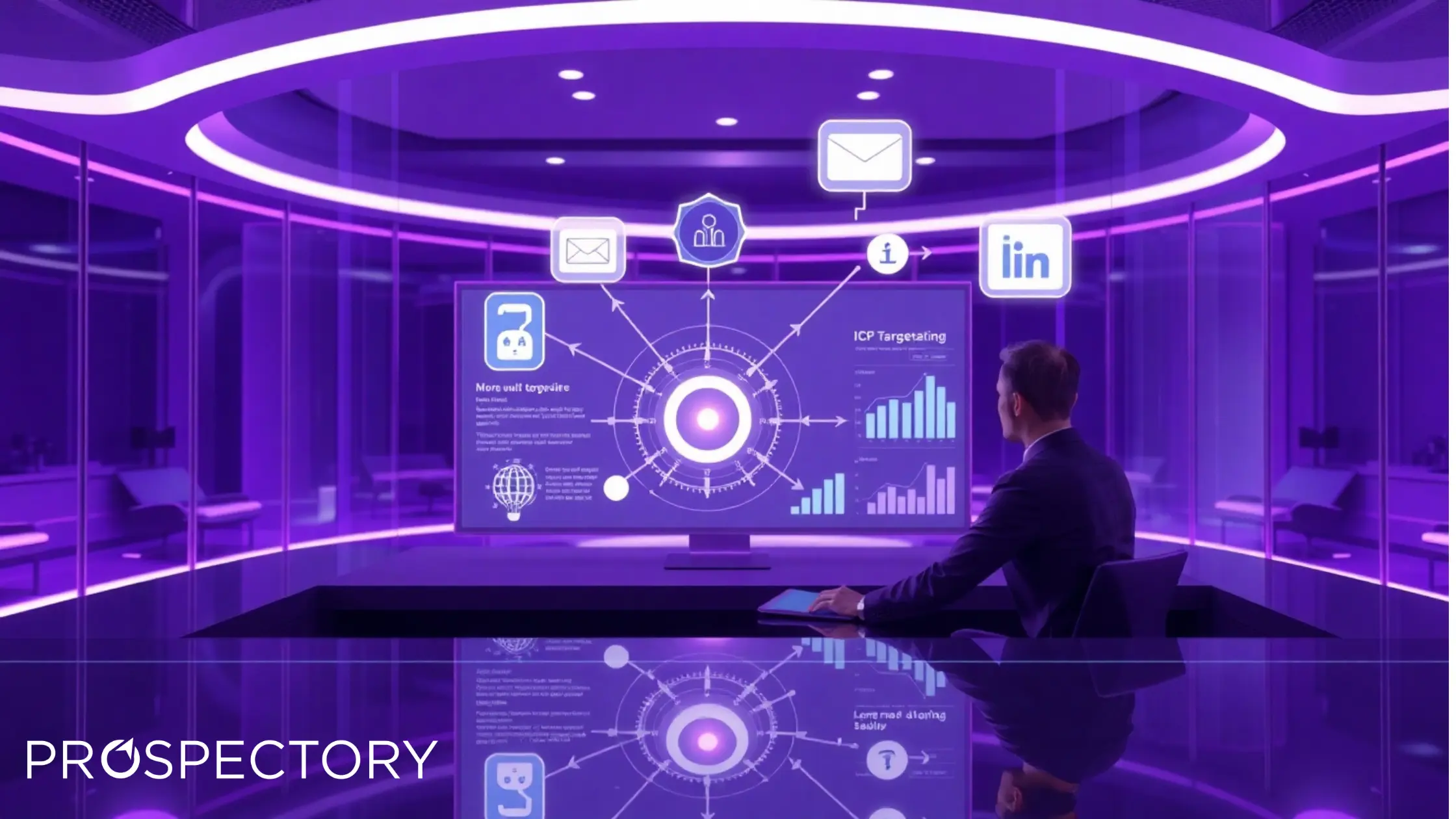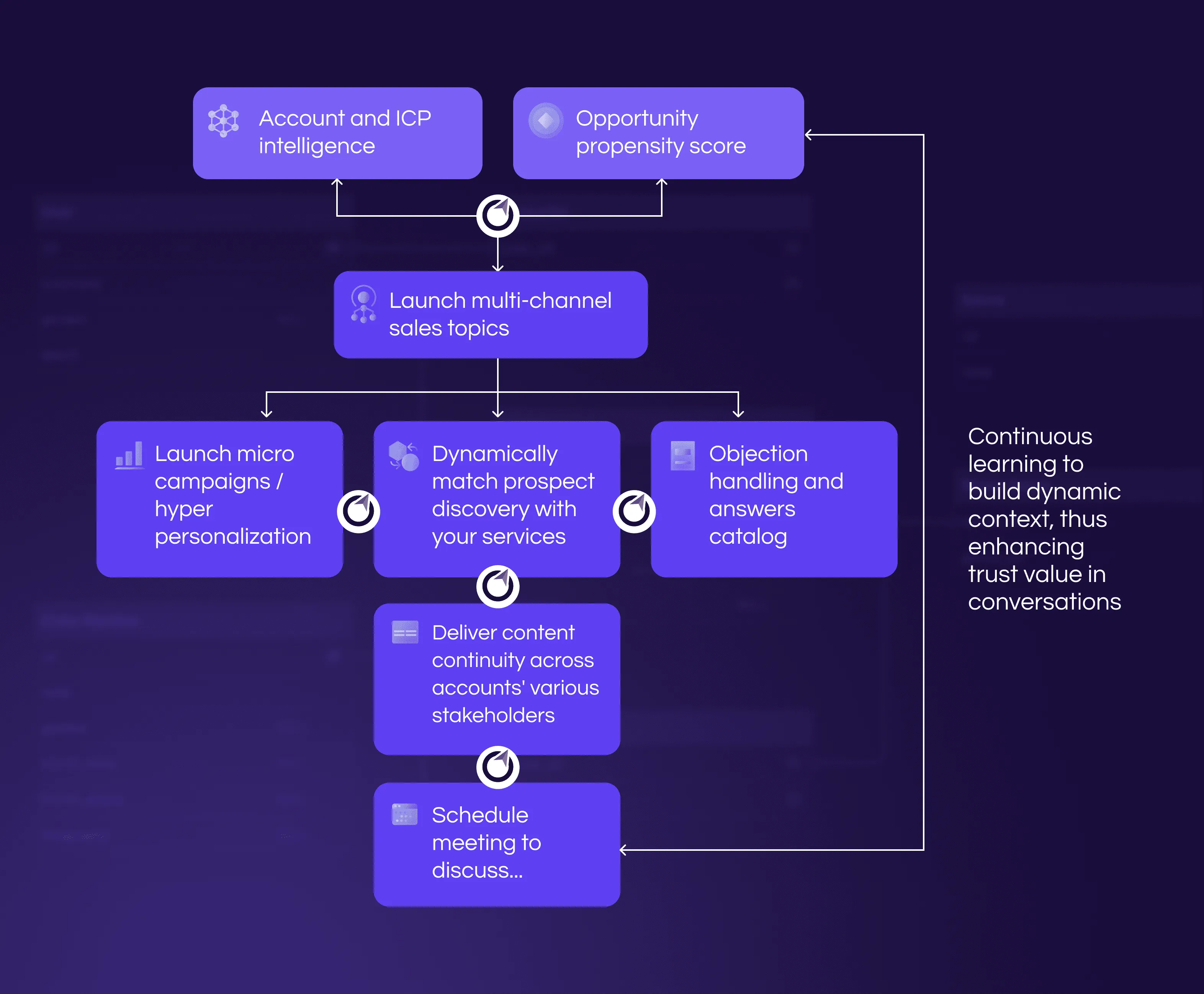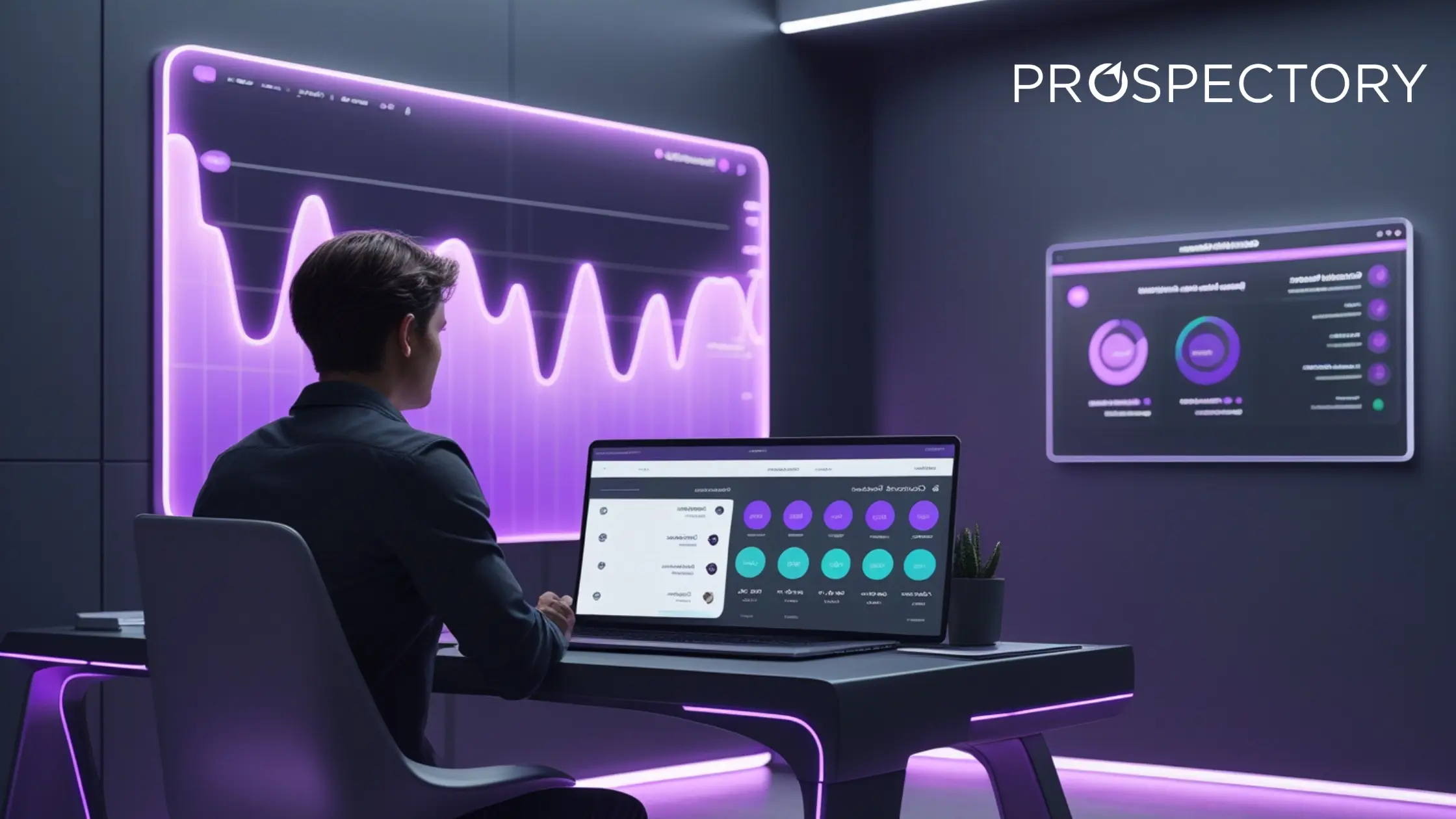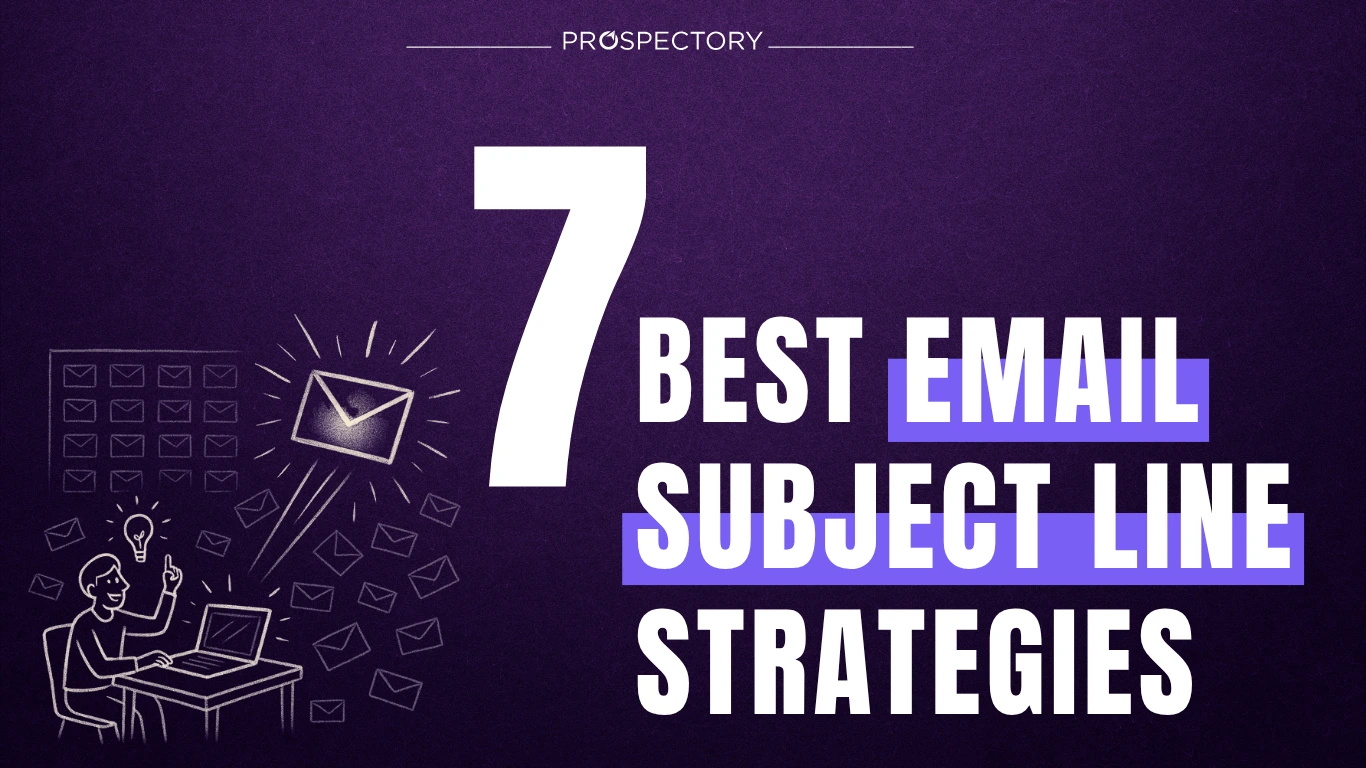Outbound SDR Mastery: Build, Scale, and Win

It's a fine art to turn cold calls into warm conversations in the age of AI-driven sales.
The Reality Every SDR Thinks (But Few Will Say Out Loud)
Fifty dials before your first coffee.
Three decision-makers hanging up mid-sentence.
A LinkedIn inbox that feels like an echo chamber.
Outbound sales development is not for the faint of heart, and yet, for the companies that get it right, it’s the engine that keeps revenue growing even when inbound leads slow to a trickle.
At Prospectory, we’ve worked with high-performing SDR teams across industries, and the difference between teams that survive and teams that scale comes down to three things:
- The right people in the right roles
- Rock-solid processes that don’t rely on luck
- Intelligent use of technology — without losing the human touch
This is your playbook for building an outbound SDR function that not only hits quota but dominates your market.
What Is an Outbound SDR (and Why They Can Bring It Home for the Team)
.webp)
An outbound sales development representative (SDR) proactively initiates contact with cold leads to create sales opportunities.
They’re hunters - researching, reaching out, and qualifying prospects that haven’t raised their hand yet.
Core responsibilities include:
- Prospecting: Identifying companies and decision-makers that match your ideal customer profile (ICP).
- Cold outreach: Connecting via phone, email, and social to spark interest.
- Social selling: Using platforms like LinkedIn to build familiarity before the pitch.
- Qualification: Using a structured framework (BANT, MEDDIC, etc.) to ensure the lead is worth an AE’s time.
- Appointment setting: Booking and handing over meetings with full context so AEs can close faster.
The best SDRs are measured by meetings booked and pipeline created, not just activity volume.
Stage 1: Prospecting & Research - The Foundation of All Outreach
.webp)
Bad data kills more deals than bad calls.
If your SDRs are working from outdated lists or poorly defined ICPs, every other stage in the process suffers.
How to do prospect research right:
- Segment by buyer persona: Instead of one giant list, create separate segments for each ICP. Example:
- Marketing VPs in financial services
- Digital marketing directors in SaaS
- Marketing VPs in financial services
- Layer in firmographic filters: Industry, company size, funding stage, tech stack.
- Research personalization triggers:
- Recent funding rounds
- New leadership hires
- Product launches
- Recent funding rounds
- Use the right tools:
- Data platforms: Cognism, ZoomInfo
- Social intel: LinkedIn Sales Navigator
- CRM enrichment: Clearbit, Apollo
- Data platforms: Cognism, ZoomInfo
Pro Tip: A list is only as good as its freshness. Automate enrichment so contact info and company details update in real time.
Stage 2: Outreach - Building a Multichannel Cadence That Converts
A single cold email isn’t outreach.
It’s a coin toss.
High-performing SDR teams run multichannel sequences across email, phone, and LinkedIn over 2–3 weeks.
Example cadence:
- Day 1: Cold email - short, problem-focused.
- Day 2: LinkedIn connection request referencing a relevant detail.
- Day 4: Cold call - personalized opener, clear next step.
- Day 6: Follow-up email with case study or value asset.
- Day 10: Second cold call - reframe problem, offer quick win.
- Day 14: LinkedIn message - follow up based on their recent post.
- Day 16: Break-up email - respectful close with open door.
Rules for every touch:
- Personalize the first line with a trigger you’ve researched.
- Focus on their pain, not your product features.
- Make the ask small - a 15-minute chat, not a full demo.
Stage 3: Qualification & Handoff - Protecting the AE’s Calendar

If SDRs don’t qualify leads properly, AEs waste time — and trust in the SDR team erodes.
Two qualification methods:
- Discovery call: Especially for complex sales, SDRs run a 10–15 minute call to uncover needs, budget, and timeline.
- Framework scoring: Apply a consistent method (e.g., BANT) so every AE handoff meets the same standard.
Best practices for handoff:
- Add detailed notes in CRM (pain points, objections, decision-maker details).
- Warm handoff via email or quick call introduction.
- Ensure the AE never has to re-ask basic questions.
The Tools That Turn SDRs Into a Force Multiplier
Technology doesn’t replace good salesmanship — it amplifies it.
Essentials for outbound SDR teams:
- CRM: HubSpot, Salesforce for lead tracking & pipeline visibility.
- Sales engagement platforms: Outreach, Apollo, or Prospectory’s preferred tool for cadence automation.
- Dialers: Power dialers for speed, click-to-call for CRM integration.
- Data tools: ZoomInfo, Cognism for targeted lead sourcing.
- AI SDR assistants: Automate personalization, follow-ups, and cadence adjustments at scale.
Prospectory Edge: We integrate AI to handle repetitive admin so SDRs spend 80% of their time talking to prospects, not managing spreadsheets.
Best Practices That Separate Top-Performing SDR Teams From the Rest
1. Tailor Messaging by ICP
One-size-fits-all messaging underperforms. Write scripts and email templates for each persona’s unique pain points.
2. Personalize Without Slowing Down
Use AI to research and personalize at scale, but review and tweak before sending.
3. Maintain Cadence Discipline
Don’t stop after two touches. Most wins come after 6–10 quality touchpoints.
4. Track and Coach by Metrics That Matter
Monitor:
- Email reply & open rates
- Cold call connect rate
- Meetings booked
- Pipeline value
5. Test, Iterate, Improve
A/B test subject lines, call openers, and CTA phrasing. Let data guide process refinements.
Head's Up! Here's What Kills SDR Productivity
- Skipping follow-ups: Persistence wins - most leads won’t respond until the 6th–10th touch.
- Generic email blasts: If it reads like a template, it gets deleted.
- Neglecting CRM hygiene: Outdated data = wasted outreach.
Scaling Without Scaling Headcount
The classic growth bottleneck: more leads, same number of SDRs.
The answer isn’t always hiring - it’s intelligent automation.
With AI handling:
- Lead list enrichment
- Cadence scheduling
- Personalization drafting
…your SDRs can do what only humans do best: build trust and close meetings.
Final Takeaway - Outbound Wins When Process Meets Persistence
Outbound SDR success isn’t magic. It’s a repeatable formula:
- Laser-targeted lists
- Multichannel, persistent outreach
- Qualification discipline
- Tech that supports, not replaces, the human
Prospectory’s approach is built on this foundation, but we add a layer most teams miss: we don’t just measure activity, we measure impact.
Because in the end, it’s not about how many calls you make. It’s about how many conversations turn into customers.

Related Blogs











